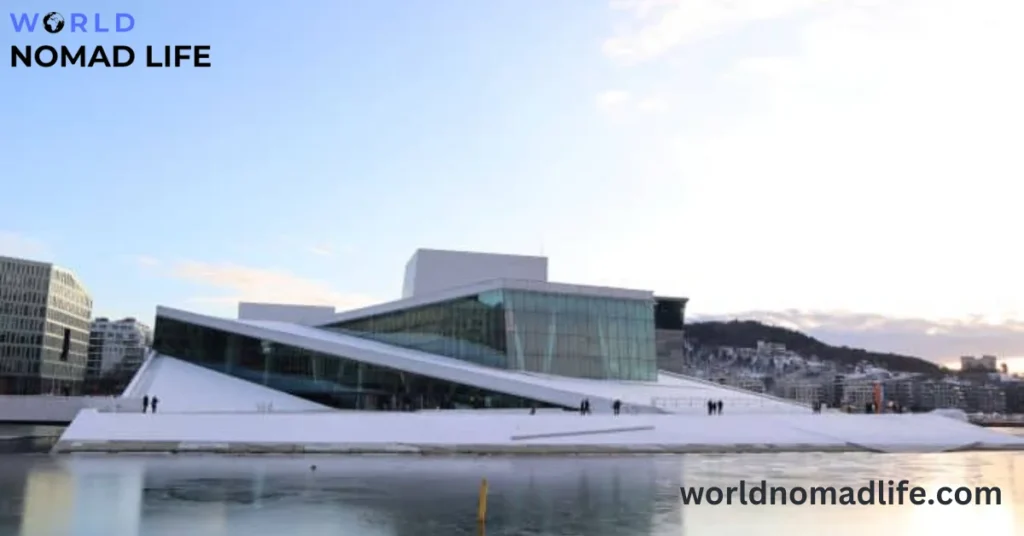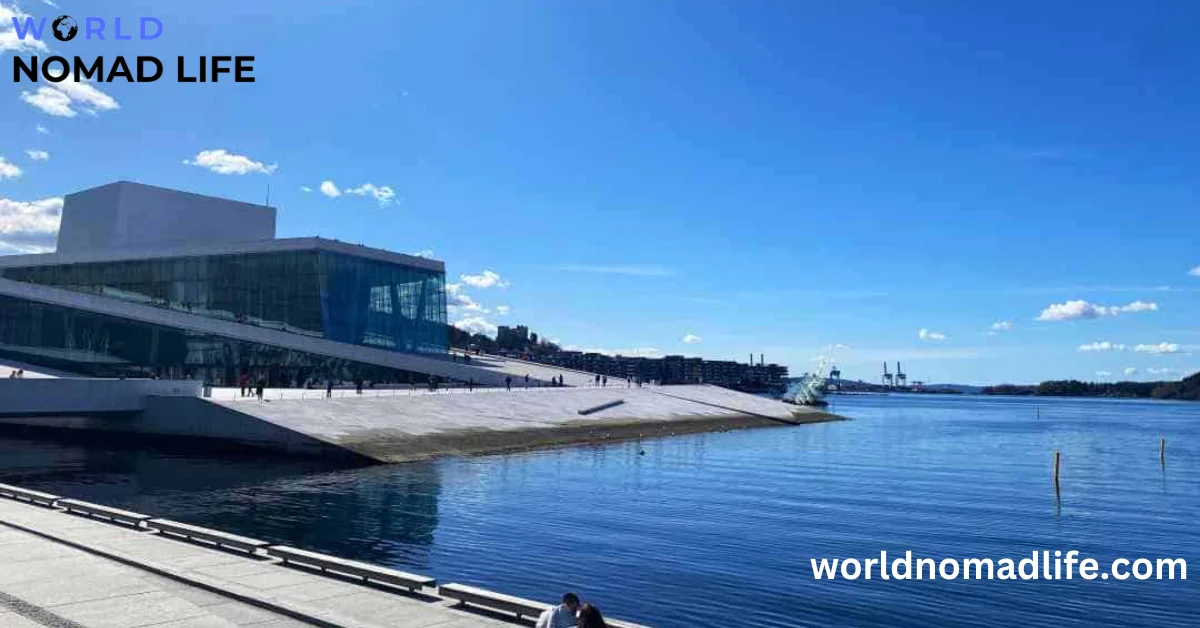Oslo mixes modern life with nature, giving travelers a rich cultural experience. In area like Grunerlokka, you can find colorful street art and cozy cafes that show the city creativity. While famous places like the Oslo Opera House attract many visitors, secret places often leave a bigger impression. A walk along the Akerselva River is especially memorable, with pop up art and peaceful parks. The city combinitations city life with natural beauty, creating special moments for visitors. I explain 12 reason that tell you Is Oslo worth visiting?
12 Reasons to Explore Norway Capital

1. Rich Cultural Heritage
Oslo cultural heritage is alive and interesting for all visitors. When I walked through the busy streets, I saw a mix of old and new, with modern buildings next to historic sites. One highlight was visiting the Akershus Fortress, where ancient stones shared stories of kings and battles, with modern art.
My trip to the Norwegian Folk Museum added to my experience. The traditional wooden buildings showed how people lived over time. I participated in a fun folk dance workshop that felt like a journey back in time. It was exciting to learn movements passed down through generations.
This mix of storytelling and participation showed how Oslo honors its history while also fostering attractive cultural scene that connects visitors and locals. Each attraction highlights different parts of Oslo identity, inviting everyone to explore and think about what defines Norwegian culture today.
2. Stunning Natural Landscapes
Oslo is a city where nature and urban life come together, making it a great place to explore. I was amazed by the beauty of the Oslo Fjord, which stretches across the horizon. On a relaxing ferry ride, I discovered secret islands like Hovedya and Langoyene, each with lovely beaches and peaceful walking paths away from the busy city center. The lively city life and calm nature gave me a new way to relax in beautiful surroundings.
Another reason to visit Oslo is its nearby green hills and forests, perfect for outdoor lovers. While hiking in Nordmarka, I found secret tracks filled with wildflowers and stunning views of lakes surrounded by tall pine trees. Each step into this peaceful woodland connected me to nature and reminded me how important green spaces are for mental refreshment.
As I explored this beautiful landscape, I appreciated not just the views but also how nature enhances Oslo charm as a cultural center and an outdoor paradise waiting to be discovered.
3. Attractive Food Scene
My recent travels opened my eyes to a lively food scene. Each market I visited was full of bright colors, strong smells, and tasty flavors. One memorable experience was at a busy night market where street sellors sold grilled skewers with unique spices and sweet treats made from local fruits. Each dish reflected the region culture and history.
Talking to locals made my trip even better. They shared family recipes and invited me to try their favorite foods. One evening, I took a cooking class with a passionate chef who believed cooking shows love and shares heritage. As we cooked, I noticed how each ingredient was carefully chosen, mixing tradition with modern ideas.
This connection between food and community showed me how vibrant culinary scenes reveal a place identity. They invite visitors like me to not just eat, but also celebrate our shared human experience.
4. Architectural Marvels
When I walked through Oslo, each building shared a unique story. The Oslo Opera House has a sloped roof that looks like a glacier and invites visitors to walk on it for great views of the harbor and city. I saw how modern design fits well with Norway natural beauty, connecting the buildings to their surroundings.
In the lively Barcode area,I admired the tall, narrow buildings with fun shapes and bright colors. Each building shows innovative urban living and Norway focus on sustainability. Visiting Akershus Fortress and modern sites like the Munch Museum helped me appreciate Oslo architecture more.
5. Outdoor Adventures
Oslo has many outdoor adventures for thrill seekers. Hiking the tracks in Nordmarka is a great experience, with beautiful forests and calm lakes. Hidden clearings and wide views make these hikes special. For more excitement, kayaking on Oslo Fjord lets you explore islands full of wildlife, providing a peaceful getaway.
The sound of paddling deepens your connection with nature. Every outdoor moment in Oslo shows off its beauty and offers a rare sense of peace in our busy lives.
6. Dynamic Arts Scene
Oslo has a energetic arts scene that mixes street art with modern galleries, showing local identity and social issues. Murals tell community stories and encourage conversations among residents. Old warehouses have been turned into art spaces that highlight both new and established artists.
Interactive performances connect artists and audiences, making the experience more engaging. Art is part of daily life in Oslo, enhancing its culture and inviting people to explore.
7. Quaint Areas
Oslo areas are full of history and culture that tourists often miss. Frogner has colorful wooden houses and quiet parks, with secret spots like Frogner Park, home to Gustav Vigeland sculptures. This area beautifully combines nature and art.
Bjornsen is another interesting place, mixing modern and traditional styles. Cozy cafes invite visitors to relax and chat with local artists and students. The colourful murals tell stories of the past while showcasing today creativity, showing how Oslo has changed while respecting its history.
8. Sustainable Living & Transportation
Sustainable living means connecting more with the environment and changing our daily choices. Using a bike changed how I move around the city and helped me appreciate local nature. Biking through parks with wildflowers showed me that cities can live in harmony with nature.
Using public transportation also helped my sustainability journey by cutting down on solo car trips, reducing traffic, and lowering greenhouse gas emissions. Riding buses and trains allowed me to meet other travelers, showing that sustainable living is a group effort.
This connection motivates us to support eco friendly transportation for future generations and reminds us of our responsibility to care for the planet.
9. Scandinavian Design
In Oslo, I saw how Scandinavian design combines function and beauty. The minimalist buildings, like the Oslo Opera House, blend with the attracting fjord. Each area had local cafes and shops that focused on sustainability and style.
My visit showed how design connects people to their surroundings. In Grunerlokka, colorful murals on old buildings highlighted the role of art in city life. The furniture told stories made from natural materials, showing simplicity and warmth.
This focus on form and function explains why Scandinavian design influences global trends, promoting minimalism while keeping comfort and creativity.
10. Hospitality & Service
Oslo hospitality combines Nordic charm with modern touches, creating warm dining experiences. I enjoyed pastries at a cozy cafe in Grunerlokka, where the staff shared Norwegian culture, turning my coffee break into a meaningful chat.
Fine dining features local ingredients, with chefs making dishes that reflect Norway landscape. At a waterfront restaurant, I savored reindeer tartare with hand picked herbs, feeling close to nature. The friendly atmosphere among diners and great service made us feel like valued guests.
Oslo true essence shines in these moments where food and connection come together, leaving lasting memories.
11. The Downside: Prices in Oslo
Oslo is beautiful and culturally rich, but it is expensive to live there. Eating out, even casually, can feel like a big expense, making you think twice about what to order. Everyday costs like coffee, transportation, and housing add to the financial burden.
Although public transport works well, fares and monthly passes can add up quickly. This financial pressure turns fun outings into careful budgeting, which takes away from the joy of exploring the city. In the end, Oslo is a lovely place to visit, but its high prices need careful planning to enjoy it fully.
12. Nobel peace center
The Nobel Peace Center in Oslo promotes peace and resilience around the world. It honors Nobel winners and sparks discussions on important issues through interactive exhibits. Visitors learn about people fighting injustice, connecting modern movements with historical figures.
Events with activists share knowledge and inspire, showing that peace is a continuous journey. The center empowers visitors, encouraging them to take action and make a difference. More than just a museum, it is a place for new ideas, inviting everyone to think about how they can help promote peace globally.
Conclusion
Oslo is a beautiful city with a rich history and lively culture, making it a great place for travelers. The city has amazing parks, top museums, and delicious food for everyone to enjoy. If you visit the historic Aker Brygge waterfront or explore the nearby fjords, Oslo offers memorable experiences. The friendly locals and the city focus on sustainability make it even more attractive. So why not pack your bags and explore what Norway capital has in store.

